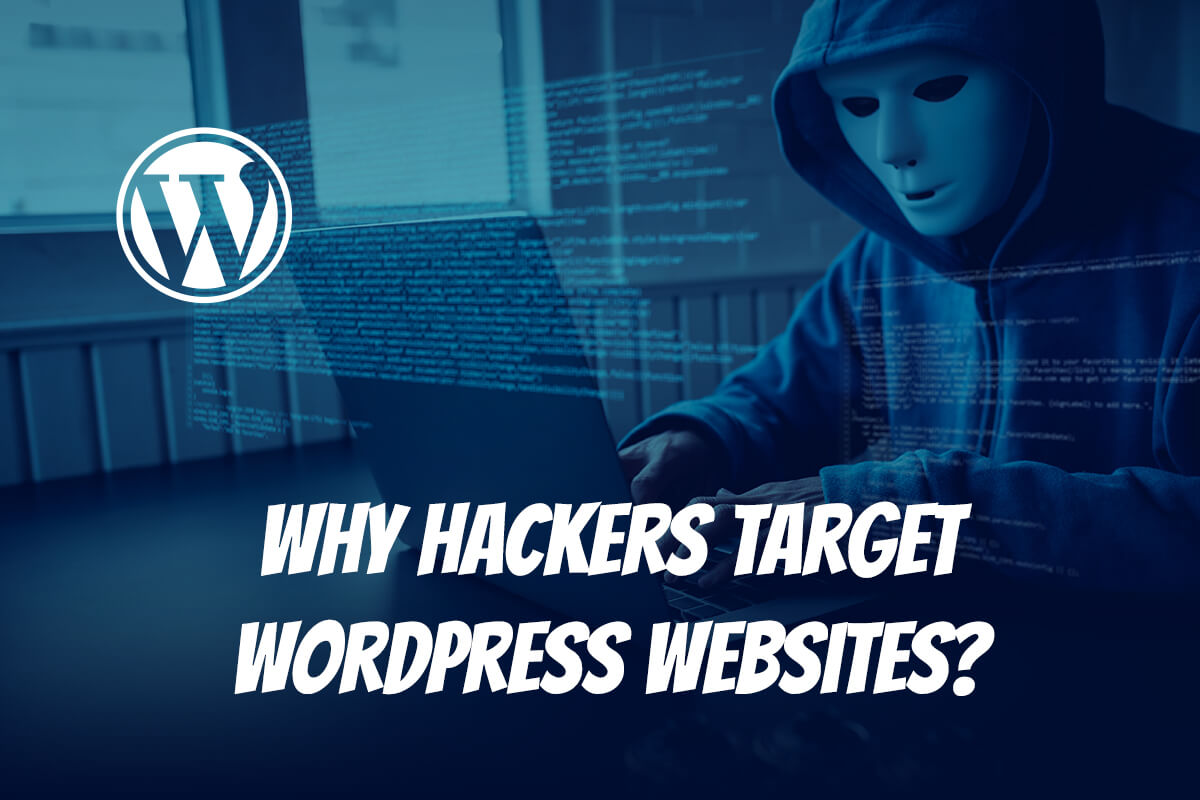We know that websites are the storefronts of businesses and individuals, and security is paramount. WordPress, the world’s most popular content management system (CMS), powers a significant portion of the web. Its widespread use, however, also makes it a prime target for hackers. Understanding why WordPress is so frequently targeted is key to developing robust defences against potential attacks. Let’s explore why WordPress is often in the crosshairs of cybercriminals, with some intriguing examples.
1. The Popularity of WordPress
The sheer popularity of WordPress is its blessing and its curse. WordPress powers over 40% of all websites on the internet. As the most widely used CMS, it’s an attractive target for hackers. A successful breach into WordPress’s system can provide access to many websites, making it a lucrative endeavour for cybercriminals. Its widespread use makes it an attractive target for hackers. For instance, in 2017, a single vulnerability in the WordPress REST API led to the defacement of over 1.5 million pages across thousands of websites. The popularity of WordPress makes such vulnerabilities especially catastrophic.
2. Vulnerabilities in Plugins and Themes
WordPress’s strength lies in its extensive range of plugins and themes, enhancing functionality and aesthetic appeal. The WordPress ecosystem is rich with over 55,000 plugins and thousands of themes. However, this is also a weakness, as not all plugins and themes are regularly updated or maintained, leaving security gaps ripe for exploitation. However, not all are equally secure. An infamous example is the TimThumb plugin incident, where a small vulnerability in the plugin’s image-resizing script led to a massive number of WordPress sites being compromised.
3. Weak User Credentials
In 2020, a study revealed that ‘123456’ was still one of the most common passwords. WordPress sites are often compromised due to such weak credentials, allowing hackers to easily break in through brute force attacks. A significant number of WordPress users neglect strong password practices and two-factor authentication. This oversight makes sites vulnerable to brute force attacks, where hackers use trial-and-error to crack passwords.
4. Outdated Core Software
Regular updates are crucial for security, yet many neglect them. The WannaCry ransomware attack in 2017 exploited older, unpatched systems, demonstrating the dangers of not keeping software up to date. While not a WordPress-specific attack, it underscores the importance of timely updates. Failing to update the WordPress core software regularly opens the door to cyber-attacks. Updates are crucial as they often contain patches for known vulnerabilities. At Hyrrokkin, we offer quarterly security audits for customers and manage the updates. If you own a WordPress website and you are not updating the core WordPress then you are directly inviting the security vulnerabilities. Read more on the WordPress Security Checklist.
5. Hosting Vulnerabilities
Many WordPress sites are hosted on servers lacking robust security measures. This makes them vulnerable to various attacks, including cross-scripting and SQL injection. Shared hosting environments can also pose risks. In 2018, a leading hosting provider suffered a breach, leading to the exposure of customer data. This incident highlights the need for secure hosting solutions for WordPress sites. At Hyrrokkin, we offer standard and premium web development solutions. However, in both solutions, we maintain zero compromise on security. We own a dedicated server and there we offer shared hosting for budget customers. This means you are getting affordable hosting costs with full control over your server as Hyrrokkin manage it on your behalf. Based on the need, we will suggest dedicated servers to ensure full security via server hardening and secure application development.
6. Large Attack Surface
The extensibility of WordPress through plugins and themes increases its attack surface. The more code a website has, the more potential there is for vulnerabilities. For example, a popular SEO plugin vulnerability in 2016 put millions of sites at risk of being taken over by hackers, showing how extensive the attack surface can be. As WordPress’s extensibility also increases its vulnerability we at Hyrrokkin follow limited to zero plugin usage. Secondly, we don’t purchase a premium theme, instead we build one exclusively for you.
7. SEO Spam
Hackers target WordPress sites to inject SEO spam, which boosts the search engine rankings of other dubious sites. This kind of attack can be financially rewarding for hackers.
8. Data Theft
WordPress sites often store valuable data, including personal user information. This makes them a tempting target for hackers who want to sell or use the data for malicious purposes.
9. Drive-by Downloads
Compromised WordPress sites can be used to distribute malware. Visitors might unknowingly download harmful software, mistaking it for legitimate files.
10. Botnet Attacks
Finally, compromised WordPress sites can be incorporated into botnets, which are used to conduct large-scale attacks, such as Distributed Denial of Service (DDoS) attacks. The infamous Mirai botnet, which caused widespread disruption in 2016, used insecure IoT devices, but similar tactics can be employed using compromised WordPress sites for large-scale DDoS attacks.
WordPress, while being a robust and flexible platform, is not immune to cyber threats. The reasons for its targeting range from its vast popularity to specific vulnerabilities in its plugins, themes, and hosting environments. For administrators, understanding these risks is the first step towards securing their WordPress sites. Strong security practices like regular updates, robust authentication, secure hosting, and vigilant monitoring are more than just recommendations—they are necessities in the ever-evolving landscape of cyber threats.






